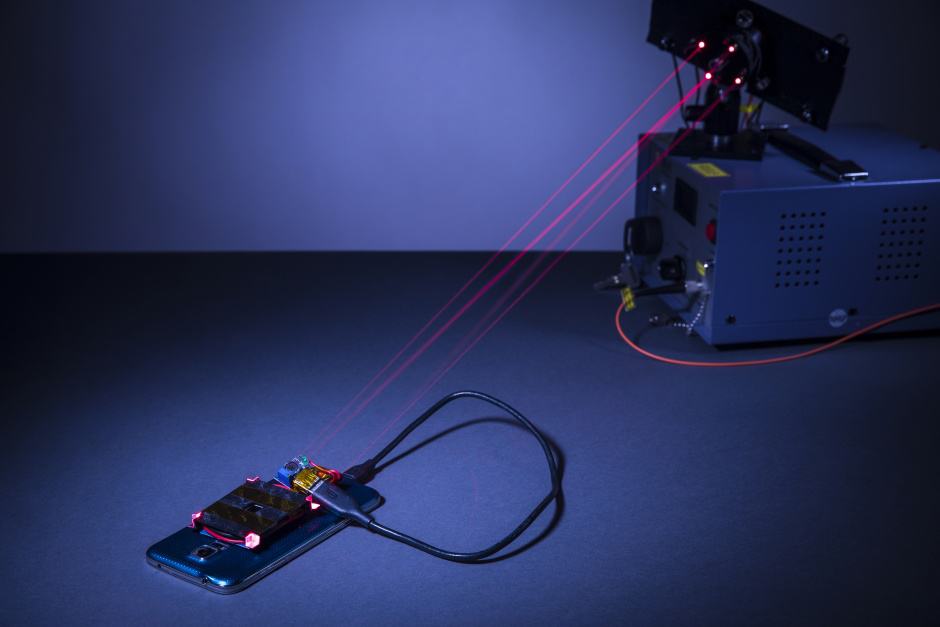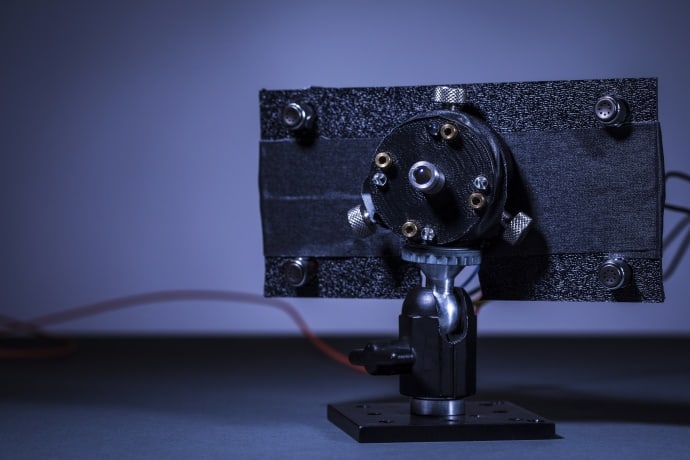
Although wireless charging for mobile devices via induction pads has been available for some years, they still can't be charged without being relatively close to a power socket. Engineers at the University of Washington in Seattle have now developed a method that could change all this; sending power to device using a laser beam from some distance across the room.
The system, developed by Shyam Gollakota and colleagues at the Paul G Allen School of computer science and engineering, uses a narrow and invisible laser to send power to an adapted smartphone, but the team believes that there is no reason it could not be used to charge a suitably equipped tablet, laptop or camera, or even to supply power to a desktop computer.
In a paper published in the Proceedings of the Association for Computing Machinery on Interactive, Mobile, Wearable and Ubiquitous Technologies, the team describes how they incorporated safety into the system.
“We have designed, constructed and tested this laser-based charging system with a rapid-response safety mechanism, which ensures that the laser emitter will terminate the charging beam before a person comes into the path of the laser,” Gollakota said.

The prototype emitter includes the power and guard lasers, guard detectors annd the microphones for the acoustic locator
The team mounted a thin power cell on the back of the smartphone, which delivers charge the phone when a near-infrared focused beam strikes it. The beam is high power, delivering 2W of power to a 15 in² area from a distance of 4.3m, but the system can be adapted to expand the charging beam radius to up to 100cm² from a distance of 12m, meaning that the beam can be directed at a counter or table top and charge any suitable device placed on it.
The safety system consists of a number of guard beams emitted by another laser which is co-located with the power laser and surround its beams. Custom 3D printed reflectors placed around the power cell on the smart phone reflects the guard beams back to photodiodes on the laser emitter. If any object, including a person, interrupts the guard beams the laser emitter turns off the power beam. The interruption can be sensed quickly enough to detect even the fastest movements of the human body and prevent burns.
“The guard beams are able to act faster than our quickest motions because those beams are reflected back to the emitter at the speed of light,” said Gollakota. “As a result, when the guard beam is interrupted by the movement of a person, the emitter detects this within a fraction of a second and deploys a shutter to block the charging beam before the person can come in contact with it.”
Future iterations would work even faster, because the nanoscale optical devices currently being developed will work at gigahertz frequencies, meaning that the shutters would operate in nanoseconds.
The charge is delivered to the device via a photoelectric cell, which is surrounded by thin aluminium strips that act as a heat sink, preventing the device from overheating; the team also harnessed a fraction of the heat via a flat thermoelectric generator mounted above the heatsink to provide some extra charge. The entire assembly of photoelectric cell, reflectors, heatsink and thermoelectric cell is 8mm thick and 40mm wide. According to co-lead author Elyas Bayati, the device charges the phone as quickly as plugging into a conventional USB port.
Another feature in the device is an acoustic locator. The smart phone emits “chirps" in the ultrasound range that can be detected by sensitive microphones in the emitter, and turn on the charging and guard beams only when the target is detected.




Report highlights significant impact of manufacturing on UK economy
I am not convinced that the High Value Manufacturing Centres do anything to improve the manufacturing processes - more to help produce products (using...